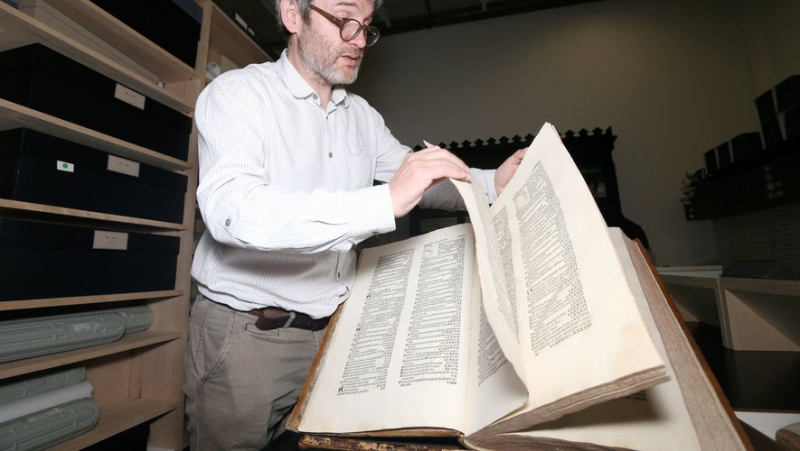“A fantastic tool for access to information”, how Gallica made it possible to digitize the press titles of yesteryear

There remains a lot of work for Didier Travier's teams. Free Midi – Free Midi
Didier Travier, curator of the Carré d’art in Nîmes, recounts the Gallica adventure and the digitization of more than half a million pages of old press titles. The oldest of which is the "Journal de Nismes" which dates back to 1786…
When did you start digitizing at Carré d’art ?
We have been digitizing the press since 2010. We started with the oldest, most interesting titles and little by little we are trying to build the entire collection. We work very closely with the Gard departmental archives to reconstruct the most complete collections. Then it is transmitted to a scanning operator. Before it was available on the region's website, now it has been integrated into Gallica. Everything accelerated in connection with Occitanie Livre & Reading. It has now become a fantastic tool for accessing information.
How many documents does this represent for you?
For us this represents 517,000 scanned pages and 460,000 which are already online, because there is always a small delay.
And you still have to scan?
Oh yes. We started initially on the basis of a bibliography of the French general political information press, or Bipfpig in our jargon which ends in 1944. There is one volume per department. We started to skim this repository. Then we are now expanding it in two directions: specialized journals such as, for example, a set of Protestant newspapers published in Nîmes. And on post-war publications from the period 1944-1955, because the copyright is 70 years, after that it is free to access. For the moment we have hardly touched it, there is a whole field opening up to us.
And in particular Midi Libre ?
Yes, but there is a question not completely resolved with the BNF, that of the management of regional editions. We work in close collaboration with the departmental archives: we work in particular with Hérault which has already done part of this work, and we will focus on specific editions. So we still have work to do.
What feedback have you received?
They are excellent. First, because you can access them whenever you want and remotely. You don't have to come to the library to consult them. But what is even more impressive is that everything is “OCRed”, that is to say, everything is transformed into a text file, thanks to OCR software. This allows you to do keyword searches, which works very well for character names. Gallica is able to bring up all the occurrences for you, which saves a lot of time for researchers and genealogists in particular.
When is your oldest document ?
In the local newspaper, we have a copy of the “Journal de Nismes” which covers the period 1786 to 1790.
It must be in poor condition ?
No, because until 1830 we had rag paper, a good quality paper. Paper became of poor quality at the time of the explosion of the press in the 19th century when it was replaced by wood-based paper pulp, some copies could turn to dust, hence the interest in digitizing them.
I subscribe to read the rest




